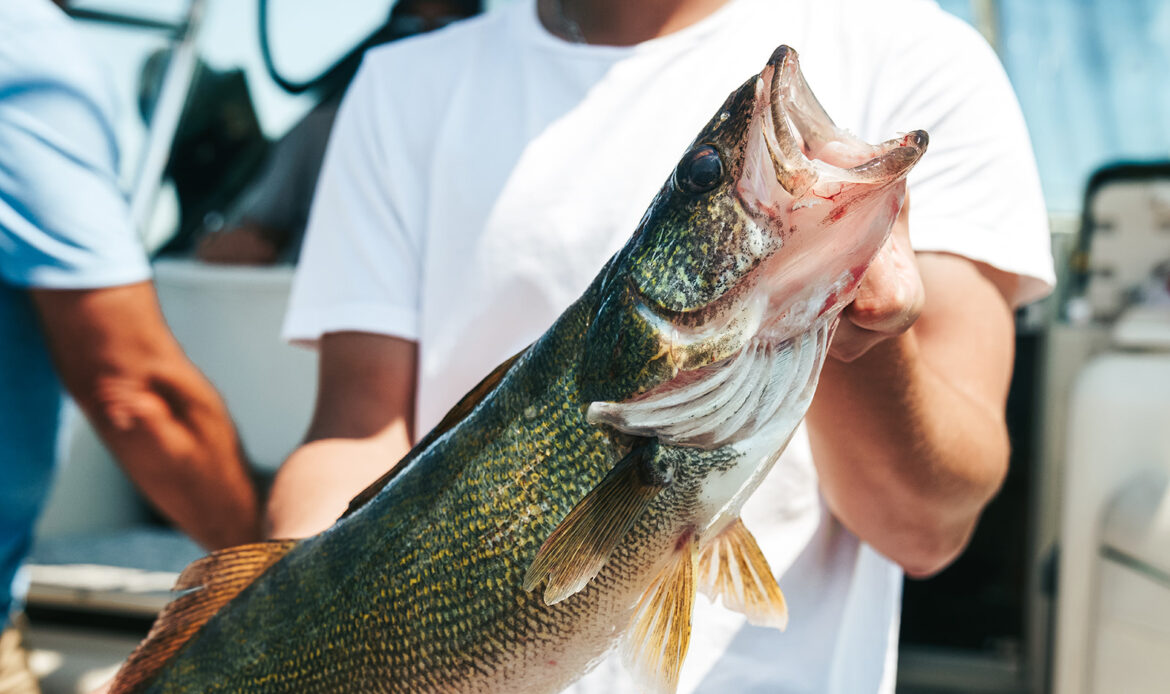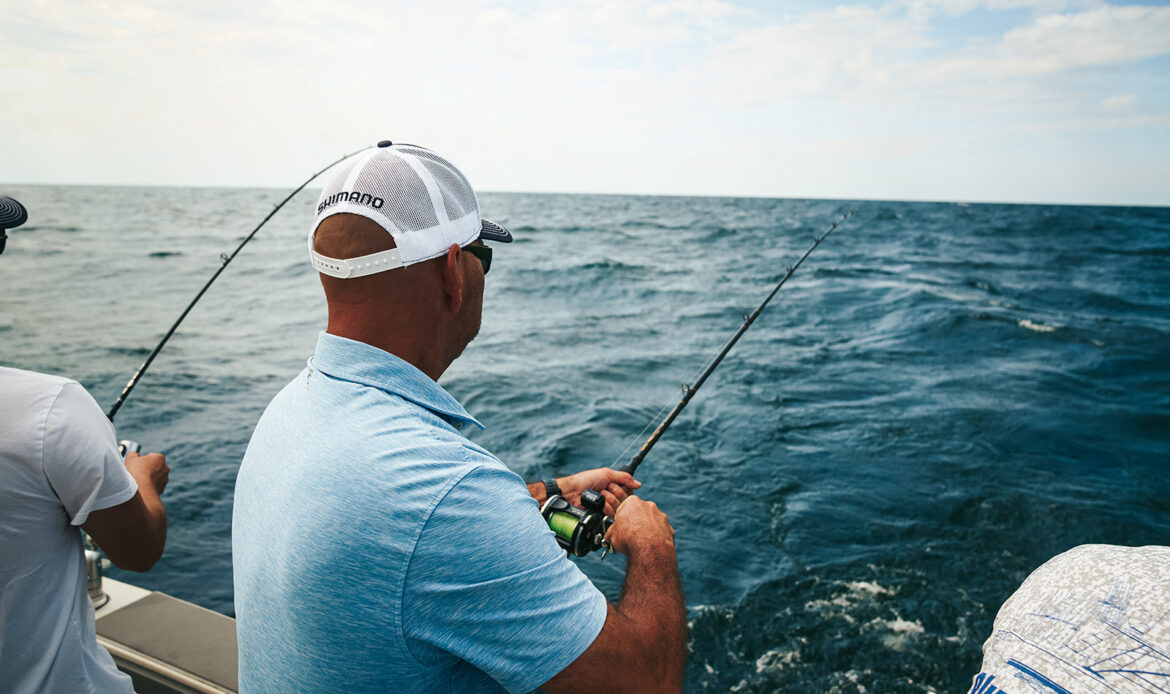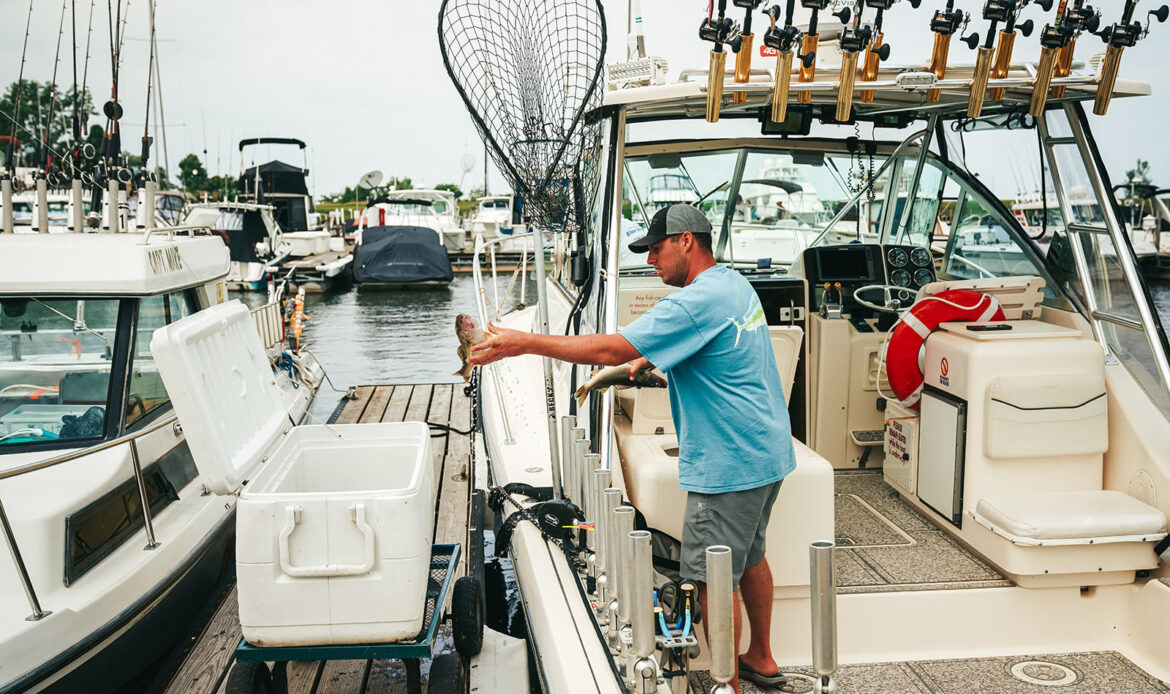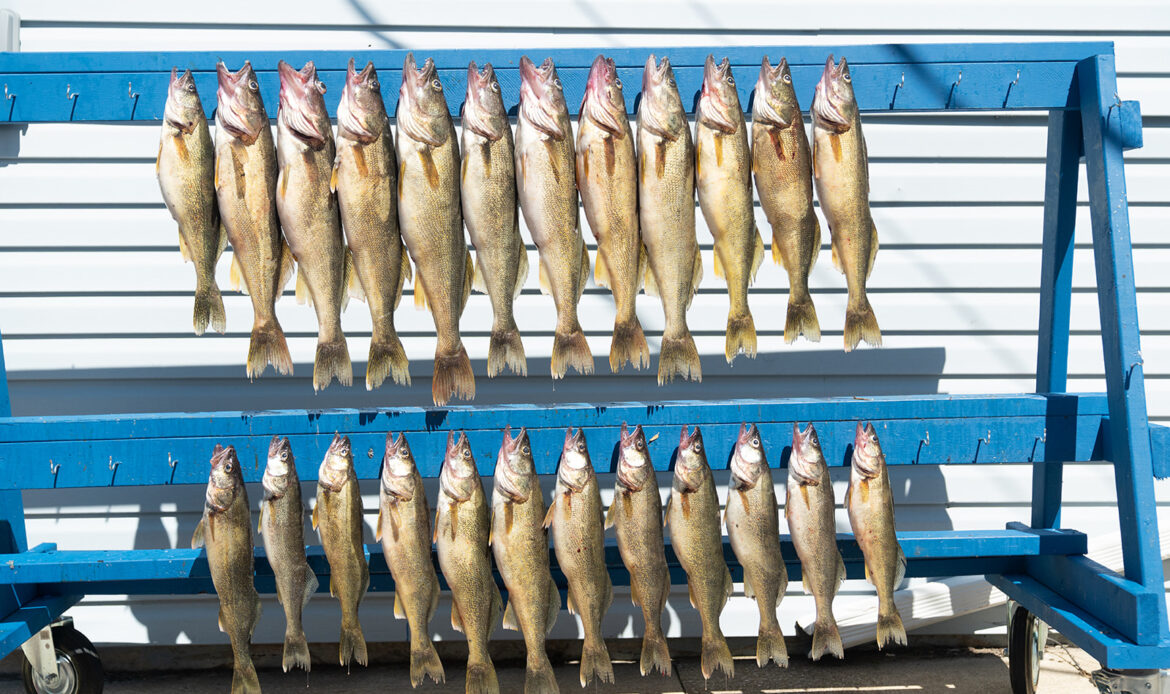Lake Erie Was Once Declared Dead but Is Now the Greatest Walleye Fishery on Earth
Parts one and two in this series describe how Lake Erie’s habitat, water quality, and fish populations have changed over the past few generations. Lake Erie reigns today as the most fertile of all the Great Lakes. In the late 1960s and early ’70s, however, fish stocks collapsed, dangerously high contaminant levels prompted closures to commercial and recreational fishing, one of Erie’s major tributaries routinely caught on fire, and the lake became synonymous with pollution.
Though Erie’s character has been indelibly altered, the lake is a testament to the resilience of aquatic ecosystems. By 1979, just seven years after the implementation of the Clean Water Act and the Great Lakes Water Quality Agreement, levels of phosphorus, PCBs, DDT, and Mercury had all fallen dramatically. By the mid-1980s, the combination of rapidly improving water quality and a robust fishery management plan created a huge rebound in fish, at least certain fish.
Multiple Fish Species Thrive After Lake Erie’s Rebound
Fish numbers dropped so low during the bad times that, as conditions improved, the ones best adapted to the altered ecosystem found themselves in a lake that resembled Golden Corral at 10:30 a.m. on a Tuesday—tons of space and food with very little competition. Though Erie now supports huge amounts of life, it’s not the same lake it was 200 years ago. Fish that were historically abundant—lake trout, northern pike, sturgeon, whitefish, and muskie—struggle with the warmer water, lower oxygen, higher nutrient content, and diminished clarity of the lake. But those conditions have allowed other species to proliferate. Carp and channel catfish filled in the gaps left by the sturgeon. Perch supplanted whitefish. Smallmouth bass prowl in packs. But one fish has found the new Lake Erie so well suited to its preferences that it has multiplied like barn cats. Luckily, the big winner in this altered ecosystem lottery happens to be the Midwest’s favorite sport and food fish: walleye.


Here Is Why Lake Erie Truly Is the “Walleye Capital of the World”
Ten different U.S. towns claim the title “Walleye Capital of the World” (strangely, two of them happen to be named Garrison), but only Port Clinton, Ohio, abuts Lake Erie. That gives this small city a huge advantage over the competition because Lake Erie is currently the undisputed champion of all walleye lakes. Truthfully, there’s no real comparison. An estimated 100 million legal-sized walleye are swimming in Lake Erie. That’s 100,000,000 fish over 15 inches. For comparison, Mille Lacs (where one of the Garrisons is located) hosts an estimated 727,000 fish over 14 inches. Even after accounting for acreage—Erie is five times the size of Mille Lacs—that’s more than double the density of mature walleye.
Lake Erie is just shy of 10,000 square miles, meaning there are an average of 10,000 fish over 15 inches per square mile. Of course, the fish aren’t evenly distributed throughout the lake, so if you’re fishing in an area where walleye schools congregate, the numbers get staggering, fast. That’s reflected in the limits as well as the catch and harvest rates. The Ohio Department of Wildlife estimates that more than 5 million walleye were harvested just the Erie waters in their state in 2020, and the numbers have only gone up since then. The Total Allowable Catch from Erie was set at 14.53 million walleye for 2022, with half of that allotted to the state of Ohio. The Buckeye State doesn’t allow commercial fishing (though Ontario does), so all of their quota goes to rod-and-reel anglers.

As crazy as those numbers are, biologists forecast Erie’s walleye population to remain level or even increase. The past five years have seen walleye hatches averaging about 80 fish per hectare, 500% of the historic average of 16 fish per hectare, adding up to more than 20,000 fish hatched per square mile of the lake each of the past five years. Now, I’m a fisherman, not a math guy, but by my calculations, that would put the sum total of walleye swimming around in Lake Erie at exactly 80 metric crap tons, give or take.
Perhaps the greatest testament to the fertility and habitat quality of Lake Erie, at least as far as walleye are concerned, is that walleye have never been stocked in this lake. While the astronomical numbers of these fish are not exactly natural (they are significantly impacted by anthropogenic changes to the ecosystem), they are the product of natural reproduction. We are living through the greatest walleye fishery the world has ever seen. If you’re a walleye angler in or near Ohio, these are the good old days.
Walleye Drive the Recreational Fishing Industry in Ohio on Lake Erie
The recreational fishing industry generates between $1 billion and $1.5 billion annually for the state of Ohio, and Erie walleye are the predominant fish driving that industry. Over 900 licensed charter captains guide the Ohio waters of Erie. The state understands these fish’s value, which is reflected in a collaborative management and tracking collaboration program between various state agencies and the Canadian Government.

Since 2010, management agencies have been capturing fish from various populations within the lake, implanting transmitters into them, and following their every move. There are acoustic telemetry monitoring devices embedded in the Erie lake bottom every 7 to 15 kilometers. They’ve created a walleye Deep State: tagged fish can’t go anywhere without being tracked. Approximately 2,000 walleye are currently pinging around down there, with each fish providing about 1 million detections throughout the life of a transmitter. So, not only does Erie have by far the most walleye of any lake, but researchers are figuring out exactly where and when they congregate throughout the year.
So When Are You Heading to Fish Lake Erie?
If you’re one of the millions of people who get all antsy in their pantsy about catching walleye, you should be fishing Lake Erie…now. Daily limits allow anglers to keep six fish over 15 inches; as we’ve already established, the lake has plenty of those. Additionally, this is probably the best place to find large numbers of big walleye—fish over 26 inches—and a 30-plus incher is a real possibility. We even have a trip planner to make it easy for you!

While the name Erie may still ring in the collective memory with images of dirty water and dead fish, the lake has changed in the past half-century. Erie’s now teeming with life, especially walleye.



